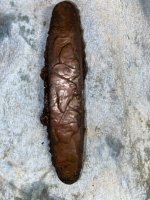QNCrazy
Hero Member
I was working my claim yesterday when I heard a twig snap up on the hillside. My friend heard it also and saw someone up in the trees. It was a USFS Ranger. He came down and introduced himself. He said he saw some turbidity downstream and came up to investigate. I introduced myself as the he claim owner. He looked at my operation and said everything looked fine. He asked me to move my highbanker up the bank a little further to allow reduce the turbidity. He also said I needed to place my water pump in a tub or something like it to catch any fuel that might spill. I told him I knew you couldn't refuel within 25' of the waterway. He asked me how long I had owned my claim to which I indicated a month. He then asked me if I had filed for my permit. Permit? He indicated because my claim was in the national forest, I needed a permit.
He provided me with CFR code and told me I could apply at the regional office.
So after this encounter which was surprisingly pleasant, I am wondering about two things: the tub under the water pump and the permit. I researched the permit and the only thing I could find was the requirement for a plan of operations under CFR 36. So I'm all ears.
He provided me with CFR code and told me I could apply at the regional office.
So after this encounter which was surprisingly pleasant, I am wondering about two things: the tub under the water pump and the permit. I researched the permit and the only thing I could find was the requirement for a plan of operations under CFR 36. So I'm all ears.
Upvote
0






